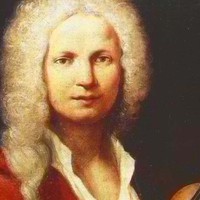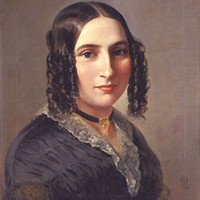Haydn’s Fire Symphony



Before Jean-Philippe Rameau moved to Paris in 1722, he worked as a church organist in various small towns, and his only notable compositions were assorted vocal works and a book of harpsichord pieces. He soon published a groundbreaking harmony treatise and two more books of keyboard suites, paving the way for his greatest ambition, finally achieved at the age of fifty: to compose grand operas. He went on to create some thirty works for the stage, the finest by any French composer since Jean-Baptiste Lully.
Les Boréades was Rameau’s last tragic opera, and it was still unperformed when he died a year after its completion. Before the first scene opens on a woodland hunt, the Ouverture establishes the setting, including calls that evoke hunting horns. The gusty bursts of violin scales portray the winds, which become a significant plot point in the opera.
It was a longstanding French custom to incorporate dance numbers within operas, which explains the presence in this suite of two examples of contredanse, the French adaptation of the British “country dance” in which partners form parallel lines. The main theme of the Contredanse en rondeau leans uncharacteristically on a foreign pitch, A-natural, which rubs against the home key of C-minor. In the next selection, an independent bassoon line, acting as a foil to the violin melody, adds a special depth and richness to the spellbinding entrance music for the muse Polymnie. For the final pairing of “very lively” contredanses from Act V, a contrasting episode in the minor key interrupts the outer statements of a foot-stomping main theme in the major key.
Aaron Grad ©2025

With a cushy job in his native Venice teaching violin at a well-endowed school for orphaned girls (many of whom were really the illegitimate offspring of aristocrats), Antonio Vivaldi was able to use his talented students to test out and refine his compositions, especially his hundreds of concertos. In 1725, Vivaldi’s publisher in Amsterdam released a set of twelve of those violin concertos under the title Il cimento dell’armonia e dell’invenzione (The Contest Between Harmony and Invention). Vivaldi named the first four concertos after the seasons, and he organized the musical ideas to correspond to descriptive sonnets. These interrelated works that we know simply as The Four Seasons live on as the crown jewels within Vivaldi’s incomparable catalog of solo concertos.
The sonnets offered Vivaldi ample opportunities for word painting, like how the first movement of Winter captures a scene of desolate cold and chattering teeth. The slow movement moves the scene to a cozy fire inside, while pizzicato raindrops continue to fall outside. Starting with hesitant, slippery steps on the ice, the finale builds to raging gusts of wind.
Aaron Grad ©2025

The composer Max Richter, born in Germany and based for most of his life in England, has amassed a broad portfolio of work ranging from classical compositions to studio albums to film scores. He explained the origins of his “recomposition” of Antonio Vivaldi’s The Four Seasons in an interview with the British radio station Classic FM: “When I was a young child I fell in love with Vivaldi’s original, but over the years, hearing it principally in shopping centers, advertising jingles, on telephone hold systems and similar places, I stopped being able to hear it as music; it had become an irritant — much to my dismay! So I set out to try to find a new way to engage with this wonderful material, by writing through it anew — similarly to how scribes once illuminated manuscripts — and thus rediscovering it for myself. I deliberately didn’t want to give it a modernist imprint but to remain in sympathy and in keeping with Vivaldi’s own musical language.”
“The key thing for me to figure out when navigating through this material,” Richter explained, “was just how much Vivaldi and how much Me was happening at any point — three quarters of the notes in the new score are mine, but that is not the whole story — Vivaldi’s DNA is omnipresent in the work and trying to take that into account at all times was the key challenge for me.”
Richter pointed to the final section of Winter as a prime example of his process, in which “there is deliberately more going on in the music than we can hear at any one time: the searching solo line, the various descending upper orchestral string lines, the lower chorale-like material — we cannot take it in as a whole, but, like a landscape, we can explore it bit by bit, listening in to its various surfaces. I personally enjoy music that allows that sort of interaction.”
Aaron Grad ©2025

Fanny Mendelssohn-Hensel‘s Das Jahr, or The Year, is a collection of twelve solo piano pieces and a postlude that she completed between August and December 1841 as a Christmas present for her husband, Wilhelm Hensel. As individual pieces, they represent the composer at her finest: a virtuosic talent, adept at a range of styles and forms, and rich with melodic and harmonic development in a range of emotions. But Das Jahr is more than twelve tunes about the seasons. This is an epic, monumental cycle layered with references, both philosophical and personal, that is more like a cantata or passion than a piano cycle.
To further those connections, Fanny and Wilhelm collaborated on a new multimedia reproduction of Das Jahr the following year in 1842. Wilhelm illustrated vignettes (including some figures modelled on Fanny and their family) and together they selected quotations of German poetry to accompany each movement. The cycle represents the passage of time and is marked by bells and chimes at critical moments like a year-long clock or calendar. Three of the movements reference major holidays such as Easter, Christmas and New Year’s Day and include quotations of German Lutheran chorales. The cycle also references music by Fanny’s younger brother Felix Mendelssohn and personal relationships and family life as well as symbolic and abstract musical ideas associated with the seasons.
In this arrangement, those ambitious artistic goals and deep connections are further highlighted through orchestration. Like her brother, Fanny completed a few large choral symphonic works herself, and I like to imagine this piano cycle as a template similar to Felix’s “Lobgesang” (Hymn of Praise) written in 1840, or the “Reformation” Symphony (which Fanny nicknamed!). In the planned full orchestra arrangement, chorus and soloists will sing the poetry selected by Fanny and Wilhelm. But in this chamber orchestra version of the first three months, the drama is carried by the orchestra alone. “January” is a solemn dream foreshadowing both the joys and pains of the year to come. It is a barren, winter landscape waiting to spring to life. “February” bursts with fiery and mischievous energy, in one moment reminiscent of a clownish Carnival before Lent begins and at other times with puckish fairy music echoing Felix’s A Midsummer Night’s Dream. But the scherzo halts to reveal a chilling death knell on the solo chime — a reminder of our mortality. (This is a danse macabre with “devils, fools, and the dead” after all!). “March” begins with blustery wintery winds and snow, but the storm passes and the snow melts with the delicate sound of celesta and strings — this gentle transformation ushers in the hope of spring and resurrection with a stirring quotation of the German chorale “Christ is erstanden” (Christ is Risen), ending part one of the year with resounding alleluias!
Jonathan Posthuma ©2025

Franz Joseph Haydn trained at a prestigious choir school in Vienna until his voice broke at 17. He spent the next twelve years teaching kids and later working for a count of modest means, until at 29 he landed the job that set him on the course to become the most famous composer in the world: In 1761, he joined the fabulously wealthy Esterházy family as their Vice-Kapellmeister, followed by a promotion five years later to Kapellmeister. Initially he was responsible for producing two concerts each week with the court’s private orchestra, and in later years his duties grew to include writing and producing operas. He spent months on end cloistered at the family’s remote summer palace, providing entertainment for the insatiable Prince Nikolaus Esterházy, a pressure-cooker environment in which, as Haydn later wrote, “I was forced to become original.”
One new direction Haydn explored in the late 1760s and early 1770s was the “Sturm und Drang” (“Storm and Stress”) aesthetic that was also cropping up in the theater, literature and art of the time. This tendency toward heightened emotion and drama tends to be associated with Haydn’s music in minor keys, but the same extremes of expression fueled major-key symphonies as well, including the symphony known by the nickname “Fire,” composed around 1768.
The Symphony No. 59 is fiery indeed, especially in the unusually speedy Presto first movement punctuated by shuddering bow strokes from the violins and forte blasts from the horns. The slow movement’s key setting of A-minor brings an unexpected chill to the atmosphere, and the Menuet reinforces the dichotomy of major and minor keys. The finale, heralded by horns and oboes, bristles with the manic energy of a hunt.
Aaron Grad ©2025
Get driving directions and find nearby parking.
Find dining options close to the venue.
View seating charts to find out where you'll be seating.
Get driving directions and find nearby parking.
Find dining options close to the venue.
View seating charts to find out where you'll be seating.
